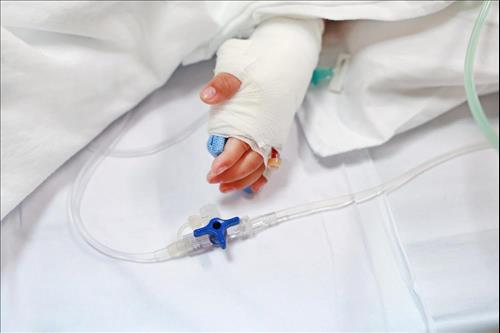
Drugs to treat chronic pain in children perhaps the most understudied area of medicine
(MENAFN- The Conversation) Drugs are typically the first resort for treating pain, and it's easy to find lots of evidence for what works and what doesn't in adults. Not all painkillers work for all adults, and there are certainly no silver bullets, but we havehundreds of high-quality clinical trialson which to build research.
It's not just adults who experience pain, though. For one in four children, pain is more than bumps and scrapes; it lasts longer than three months and isoften disabling . It's hard not to be moved by the thought of a child in constant pain, so you might think that in 2019 we would have a similar evidence base for treating chronic pain in children. But you'd be very wrong.
We recently conducted anoverview of systematic reviews(the highest form of evidence) that looked at pain in children. We found just 23 systematic reviews. Between them, they examined six trials involving 393 children; just six trials across all drugs and all chronic pain conditions, except headache. Ever. Not one treated children with cancer-related pain.
We know very little about which drugs might work, for whom they might work, or what benefits and harms may result. We know more about which talk therapies work for children ( three Cochrane reviews , that looked at more than 3,500 children) than we do about pain relief.
Read more:
New law will help drive more clinical trials for child cancers
There are some silver linings. Enough trial work exists for the UK's National Institute for Health and Care Excellence (NICE) to recommend the use of anti-TNF drugs (drugs that stop inflammation) forjuvenile idiopathic arthritis , and the danger of using codeine in children has been recognised – although not widely enough.
Children are not small adults, and we can't extrapolate evidence from adults to children because their metabolism works differently. At the current rate of clinical trial reporting – one every three and a half years – it would take us more than 1,000 years to have enough evidence to begin to help clinical decision making.

The danger of using codeine in children is still not recognised.
Wollertz/Shutterstock
Scandalous
This desperate lack of evidence on chronic pain in children is a scandal. Decision makers in government, regulatory bodies, pharmaceuticals and charities need to think hard about the topic and commit to doing something to improve things. This probably involves investigating the use of generic analgesics in different doses and formulations.
Given the ethical and practical issues of studying pain in children, academics also need to consider whether the traditional randomised comparative study of a new drug with a placebo is good enough. Our overview offers suggestions for the types of trial design that might work best. We take into account the fact that most painkillers only work well in a few, so theymaximise the chanceof finding a drug that gives good pain relief for the individual.
Chronic pain in childhood and adolescence is a major burden on individuals, families and wider society. Children miss school, don't see their friends as much, and are more anxious and depressed than children without pain.
And let's not forget that less developed countries often have the most children (41% of the world's two billion children are in Africa), so the World Health Organisation's essential drugs lists have to be based on solid evidence of effectiveness and harm.
The whole field of pain in children direly needs trials, policy and funding so we can be sure of treating our children safely and effectively. A situation where the disparity in knowledge between adults and children is around a thousand to one must be addressed. We simply cannot continue to ignore this problem.
Pain
analgesics
children's health

Legal Disclaimer:
MENAFN provides the
information “as is” without warranty of any kind. We do not accept
any responsibility or liability for the accuracy, content, images,
videos, licenses, completeness, legality, or reliability of the information
contained in this article. If you have any complaints or copyright
issues related to this article, kindly contact the provider above.

















Comments
No comment